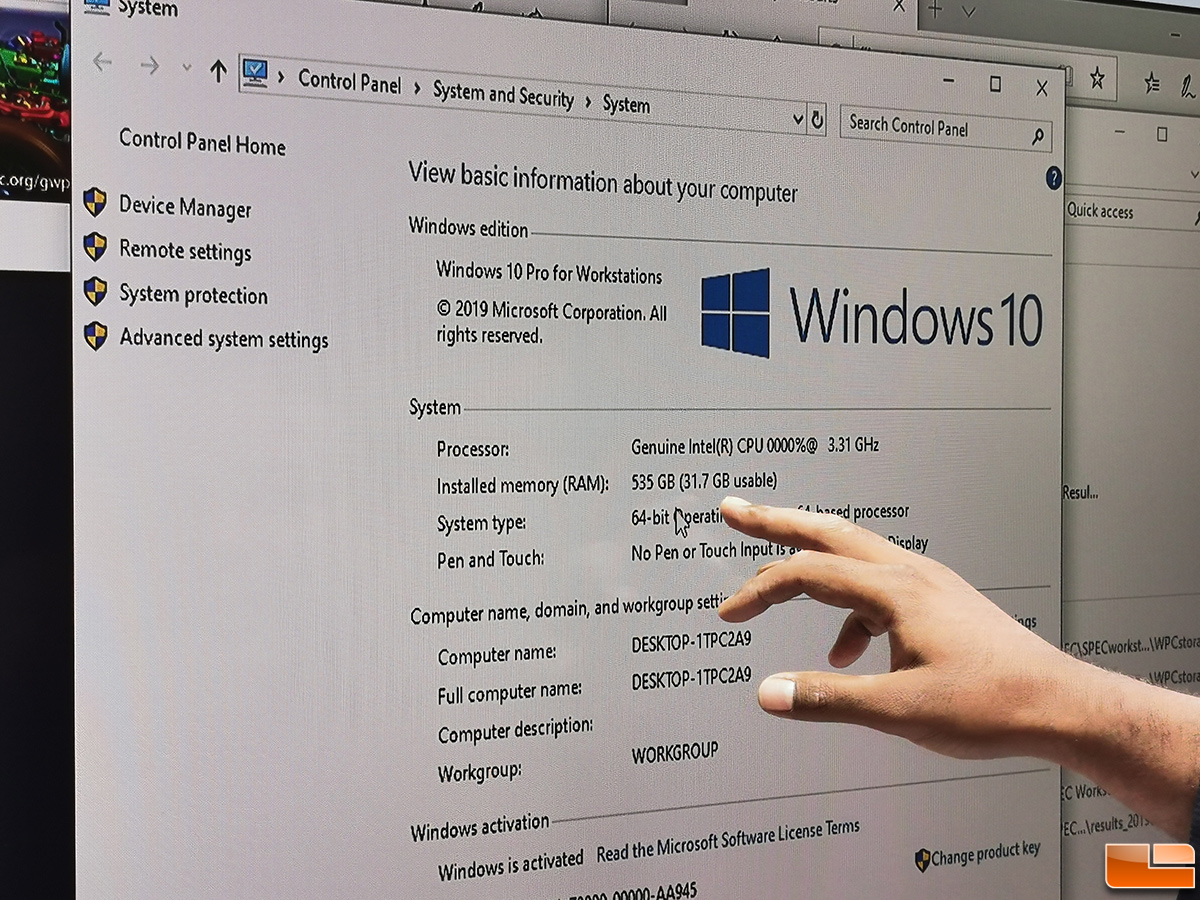

- #Install windows on optane dc persistent memory how to
- #Install windows on optane dc persistent memory update
- #Install windows on optane dc persistent memory windows 10
#Install windows on optane dc persistent memory update
BTT mitigates this risk by providing atomic sector update semantics for persistent memory devices, essentially enabling block-like sector writes so that apps can avoid mixing old and new data in a failure scenario. Unlike solid-state drives, persistent memory modules do not protect against "torn writes" that can occur in the case of a power failure or system outage, putting data at risk. Each persistent memory module contains a Label Storage Area (LSA) that stores the configuration metadata. You can create multiple PmemDisks using Windows PowerShell cmdlets to divide up the available raw capacity. A PmemDisk is a contiguously addressed range of non-volatile memory that you can think of like a hard disk partition or LUN. To use persistent memory as storage, you must define at least one PmemDisk, which is a virtual hard disk (VHD) on the host that enumerates as a PmemDisk inside a virtual machine (VM). Regions can usually be created in a server platform's BIOS. To increase available bandwidth, adjacent virtual addresses are spread across multiple persistent memory modules. Regions are often created as interleaved sets in which multiple persistent memory modules appear as a single logical virtual address space to increase throughput. RegionsĪ region is a set of one or more persistent memory modules.

Azure Stack HCI only supports block access, with BTT turned on. To learn more, see Understand and configure DAX.ĭAX isn't supported on Azure Stack HCI environments. We strongly recommend that you use DAX with Block translation table (BTT) turned on to mitigate the risk of torn writes. If you don't use DAX correctly, there is potential for data loss. You can only use DAX in combination with NTFS. Direct access (DAX), which operates like memory to get the lowest latency.You can use this configuration in combination with NTFS and ReFS, and it is recommended for most use cases. In this configuration, data flows through the file system and storage stacks as normal. Block access, which operates like storage for app compatibility.There are two methods for accessing persistent memory. This section describes the basic concepts you'll need to understand in order to deploy persistent memory in Windows Server and Azure Stack HCI environments to reduce I/O bottlenecks and improve performance.
#Install windows on optane dc persistent memory how to
For more information about how to set up cache and capacity drives, see Understanding the storage pool cache and Plan volumes. In most cases, persistent memory drives will be automatically used as cache drives, and anything slower will be used as capacity drives. However, given the pricing model, persistent memory provides the most value as either a cache or as a small amount of dedicated storage for memory mapping data. This means that you can use persistent memory modules as ultra-fast, persistent storage.Īzure Stack HCI and Windows Server 2019 support using persistent memory as either a cache or a capacity drive. Memory contents remain even when system power goes down in the event of an unexpected power loss, user initiated shutdown, or system crash. Compared to DRAM, persistent memory modules come in much larger capacities and are less expensive per GB, however they are still more expensive than NVMe. It's slower than DRAM, but provides higher throughput than SSD and NVMe. Persistent memory is a type of non-volatile media that fits in a standard DIMM (memory) slot. This article provides background on persistent memory and explains how to deploy it as the top storage tier in Azure Stack HCI and Windows Server. Persistent memory (or PMem) is a new type of memory technology that retains its content through power cycles and can be used as top-tier storage, which is why you may hear people refer to PMem as "storage-class memory" or SCM.

#Install windows on optane dc persistent memory windows 10
Applies to: Azure Stack HCI, versions 21H2 and 20H2 Windows Server 2022, Windows Server 2019, Windows Server 2016, Windows 10


 0 kommentar(er)
0 kommentar(er)
